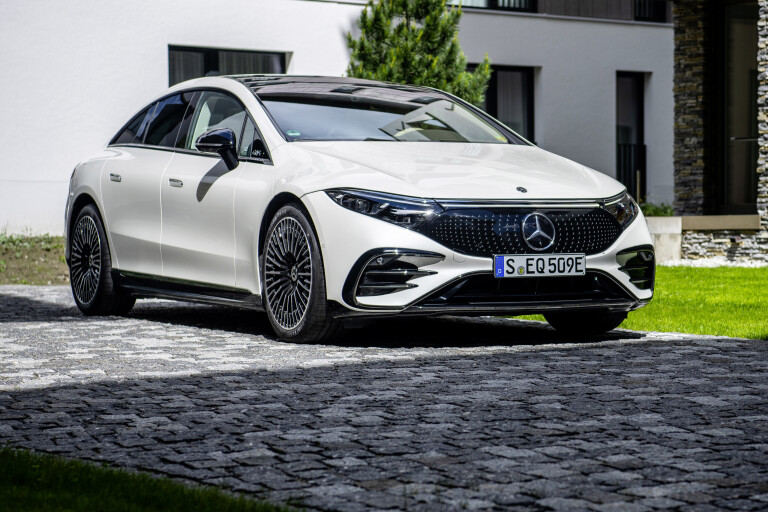
Things we like
- Better than S-Class in many ways
- Hyperscreen display is immense and impressive
- Should cost around S-Class money
Not so much
- Aerodynamics means reduced rear headroom
- Not exactly a beauty from the outside
Swift, silent and slippery, the 2022 Mercedes-Benz EQS has the essential attributes of an excellent assassin. And that's exactly what it is. This big, luxurious and tech-laden electric sedan is the car that kills the S-Class.
Mercedes-Benz, without being explicit, confirmed in late July that the just-launched and all-hybrid W223 S-Class will be the last of the line. From 2025, all new-vehicle architectures the company launches will be electric-only.
So that's the fate of the S-Class, for decades Mercedes-Benz's flagship model, effectively sealed. Only the timing of the funeral remains unknown. Will the W223 run its natural lifespan of seven or so years? Or will the EQS strangle it to death earlier than 2027?
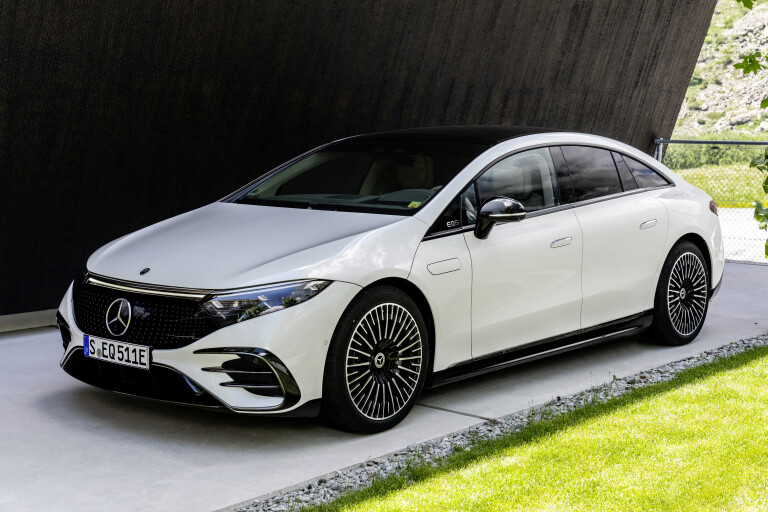
Whenever it happens, it won't be a tragedy. Not only is the EQS a machine in tune with the times and fit for the future, it's also a better big luxury car than the S-Class in many of the ways that really count.
The interior of the latest S-Class is visually stunning, but that of the EQS is even better. Especially if it has Hyperscreen. This curved and carved sheet of glass is almost the entire instrument panel, and its visual impact is immense.
Behind it are up to three displays: configurable instruments for the driver, a massive central touchscreen, plus an optional passenger screen. Hyperscreen is a technology reserved for EQ models, and it's desirable for more than just its looks.
It delivers what Mercedes-Benz calls a ‘zero-layer’ user experience on the centre screen. What this means is the use of artificial intelligence to figure out what the driver will want to use at any time, and automatically displaying these functions. It's capable of constant learning and improvement over time, but even a day spent interacting with this latest iteration of MBUX is enough to convince anyone of its value.

In tune with the streamlined Hyperscreen interface, the interior design of the EQS aims for a cleaner and more minimalistic look than the S-Class. There are few buttons, but plenty of eye-pleasing curves and impressive craftsmanship.
The interior also takes advantage of the EQS's flat-as-a-battery-pack floor. With no need for a central tunnel, Mercedes-Benz's designers could install a bridge instead. Beneath the elevated platform extending from the base of the instrument panel to the centre console is another useful, out-of-sight storage space.
The only area where the EQS's interior fails to match the S-Class is rear seat roominess. There's a good reason for this: aerodynamics.
The EQS sets a new production-car record for low drag, though it should be pointed out that only one model achieves the crucial 0.20Cd figure, and then only when fitted with a particular 19-inch wheel and some small additional aero aids.
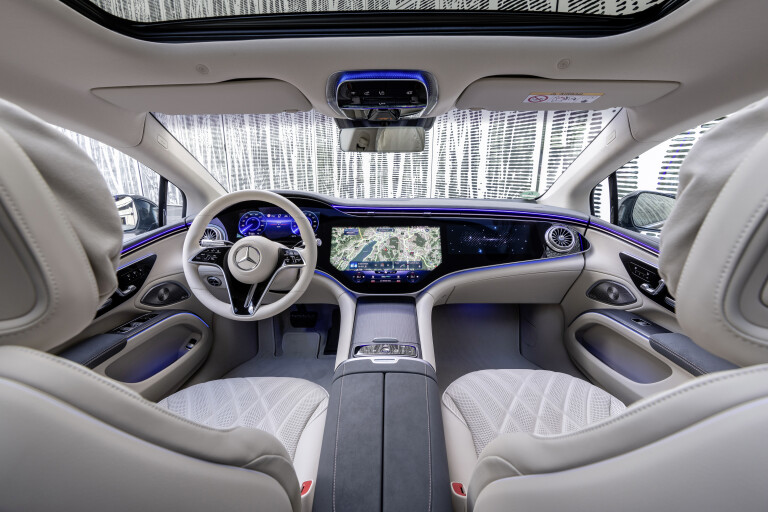
What's important to understand is that the shape of the EQS was influenced by the need to reduce air resistance more than most other cars. Aerodynamics dictated a profile rising from a low nose and then tapering from a point above the front seats to a tall tail.
And this meant the EQS almost certainly had to be a liftback. There's a massive cargo compartment ‒ 610 litres ‒ beneath it, but the rear seat isn't as sprawlingly spacious as that in the S-Class. While there's ample knee room, head clearance isn't so generous, even though the seat is relatively close to the floor.
Holger Enzmann, project lead for EQS development, confesses that senior Mercedes-Benz management didn't believe early design proposals for the car were serious. Their doubts were only dealt with when design chief Gorden Wagener's people came up with the look now known as ‘one bow’. Still, from outside, the EQS is no great beauty.
Aerodynamics played an outsize role in shaping the EQS because low drag was essential to achieving one key objective: a 780km driving range. This target was set at the very beginning of the project, or five years ago, according to Enzmann.
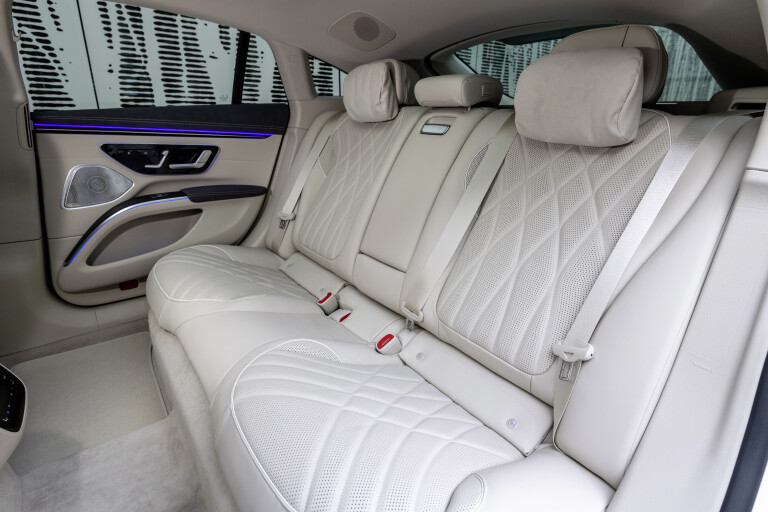
The EQS is an EV that should easily get close to, or maybe exceed, its WLTP range in day-to-day driving.
It was a very ambitious aspiration, but the EQS450+ has a 780km WLTP-rated driving range. The other variant leading the model's roll-out, the EQS580, is almost as impressive. Its WLTP range is 676km. They have the same 108kWh lithium-ion battery pack.
We drove both the single-motor 450+ and dual-motor 580 at the international launch of the EQS in Switzerland.
It's not hard to sense the effect of the ultra-aero shape. Just tap the thing behind the steering wheel that looks just like a shift paddle to disable regenerative braking. On the move, without electricity-generating drag to slow it, the EQS feels like it could roll on forever when the accelerator is released on a flat road. And going downhill it quickly gathers speed.
The quest for powertrain energy efficiency ‒ the other factor affecting EV driving range ‒ was equally relentless. The EQS has different, more advanced motors from the EQC, EQA and other Mercedes-EQ models.
They're synchronous permanent-magnet units, but the interestingly innovative motor designed for use in the rear axle of all EQS models is different from the front motor of the all-wheel-drive variants (see footer).
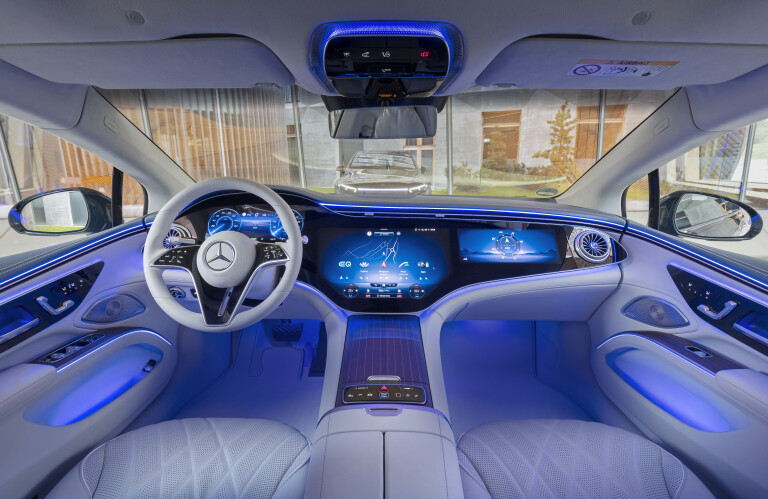
Both motors feature liquid cooling of rotor and stator, and the waste heat captured this way is used to reduce the need for electrical heating elsewhere in the car, thus boosting range. This and the other efficiency-enhancing measures seem to be effective.
On one 180km-long leg of the test program, the trip computer of the 450+ I was driving calculated my energy consumption at 12.6kWh/100km, well under the car's official WLTP rating of 15.8 to 19.8kWh/100km. Though the drive did begin high in the Alps and ended much lower, this is still a mighty impressive result.
The 580 driven the day before exactly matched the upper 21.4kWh/100km consumption of its WLTP figures. Both cars were driven quite normally.
What these real-world results mean is that the EQS is an EV that should easily get close to, or maybe exceed, its WLTP range in day-to-day driving.
The EQS is, to some extent, quite S-Class-like to drive. The two share some suspension and steering components, and both are built in Mercedes-Benz's high-tech Factory 56 in Sindelfingen, outside Stuttgart.
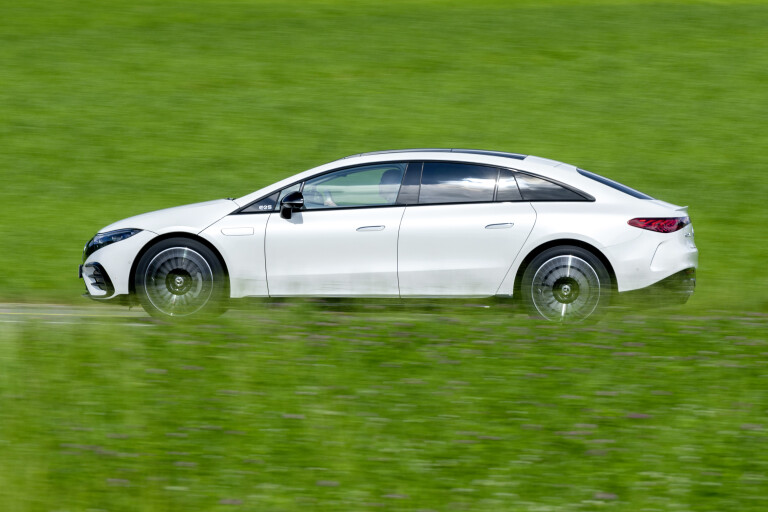
Like the S-Class, the EQS casts a large shadow. Though very long and wide, it's one of those cars that seems smaller when behind the wheel. Its width seems to shrink, while the standard rear-wheel steering system makes it feel like something with a shorter wheelbase.
But the EQS is the better driver's car. Its air-spring suspension, even in the default Comfort driving mode, doesn't deliver the same ultra-soft ride. While very absorbent, there's a little more discipline; enough to engender a sense of slightly superior agility and responsiveness.
Acceleration of the EQS is in the same league as equivalent S-Class models. The rear-drive 450+ is slower than the all-wheel-drive S450, but the all-wheel-drive 580 is a fraction quicker than the likewise all-wheel-drive S580.
But the EV is both smoother and more silent. It beats the S-Class at its own favoured game; refinement. Engineers who worked on the motors and power electronics of the EQS took great pains to make this happen.
Electric motors are not naturally quiet and vibration-free devices, nor are components like inverters, explains engineer Xenia Kressner. On a walk-round of a cutaway EQS580 skateboard chassis she points out its key features; skewed motor stator windings, noise-absorbing covers for the inverters, subframes with rubber bushings to double isolate the motors from the body structure.

These measures are very effective. I've never driven a car in which speed was so hard to judge. The way it accelerates, even foot flat, is supernaturally silent. The shove is instant, just like other high-end EVs. In the case of the EQS580 it's also massive.
Clear superiority in refinement and performance isn't hard for an EV to deliver, but there are more practical aspects of use and ownership where they struggle to even equal ICE-powered competitors.
The most obvious of these is recharging time versus refuelling time. The EQS comes standard with an 11kW on-board charger that needs a similarly rated three-phase wallbox to fulfil its potential. With one of these installed at home or workplace, the EQS will seldom need to charge anywhere else. But, sooner or later, an owner will want a quick recharge on a long trip.
Hooked up to a powerful DC fast charger, the EQS450+ can take on 300km of range in only 15 minutes. The EQS580 can add 260km in the same time, reflecting its higher energy consumption per 100km.
This isn't as speedy as filling a tank with unleaded, but most people also need a comfort stop, a coffee break, a leg-stretch, or all three, after a few hours behind the wheel. Although the number of DC fast chargers that can pump out the 200kW the EQS can accept is small, more are being installed on the major routes where they're most needed. And with its great driving range the needs of the EQS are less than other EVs.
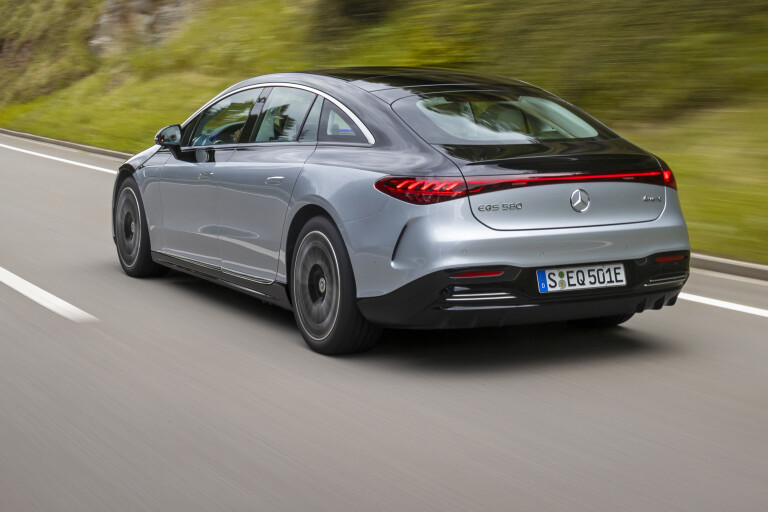
So while choosing the EQS does involve a degree of compromise, price isn't one of them. Though prices are yet to be announced for Europe, where deliveries of the EV will begin in September, it's promised the EQS will cost around the same money as equivalent S-Class models. This also goes for Australia, where the EQS is scheduled to arrive in March or April 2022.
Extra EQS variants are sure to go into production in the meantime, including those with a smaller and less costly 90kWh battery pack. Mercedes-Benz Australia is still picking and choosing, but the possibility of a single-motor EQS for between $200,000 and $250,000 surely exists.
Mercedes-Benz has made clear its future is electric, and the EQS shows that this isn't something to dread. This ultra-aero electric luxury liftback truly is a landmark in the history of the company that invented the car, simple as that.

Just a phase...
Most EV motors use three-phase power to create the pulsing forces that push their rotors round. Not the innovative motor developed for the rear axle of the EQS. It uses six-phase power.
Engineer Xenia Kressner explains what this means with a comparison to an internal combustion engine. It's like joining two four-cylinder engines to create a V8, she says.
Doubling the number of phases doubles the frequency of the electric motor equivalent of power strokes, but without any great increase in the motor's physical size. The change also makes the motor run more smoothly.
2022 Mercedes-Benz EQS specifications
| Model | Mercedes-EQ EQS580 |
|---|---|
| Motors | Dual (front and rear axles) |
| Battery | 108kWh |
| Max power | 385kW |
| Max torque | 855Nm |
| Transmissions | Single-speed reduction gear |
| Energy consumption | 18.3 ‒ 21.4kWh/100km (WLTP) |
| 0-100km/h | 4.3sec (claimed) |
| Weight | 2585kg |
| L/W/H/Wheelbase | 5216/1926/1512/3210mm |
| Price | $330,000 (estimated) |
| On sale in Australia | March/April 2022 |
Things we like
- Better than S-Class in many ways
- Hyperscreen display is immense and impressive
- Should cost around S-Class money
Not so much
- Aerodynamics means reduced rear headroom
- Not exactly a beauty from the outside

COMMENTS